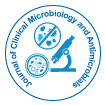

Perspective - (2023)Volume 7, Issue 2
Infectious diseases have been a constant challenge to human health throughout history. From ancient plagues to modern pandemics, these diseases have caused widespread illness, death, and societal disruptions. This article aims to provide an overview of infectious diseases, their causes, transmission methods, prevention strategies, and available treatments. By understanding the nature of these diseases, we can make informed decisions to protect ourselves and our communities.
Definition and causes of infectious diseases
Pathogenic microorganisms including bacteria, viruses, fungi, and parasites are what cause infectious illnesses. These microorganisms can invade the body, multiply, and disrupt normal bodily functions, leading to various symptoms and health complications. Some common examples of infectious diseases include influenza, tuberculosis, malaria, HIV/AIDS, and COVID-19.
Transmission methods
The treatment of infectious diseases depends on the specific pathogen involved. Some common treatment options include
Direct contact: Transmission occurs when an infected individual comes into direct contact with a susceptible person. This can happen through activities like touching, kissing, or sexual intercourse.
Indirect contact: Pathogens can survive on surfaces or objects and infect individuals who come into contact with them. This can occur through sharing contaminated needles, touching contaminated surfaces, or consuming contaminated food or water.
Airborne transmission: Some diseases can spread through tiny respiratory droplets produced when an infected person coughs, sneezes, or talks. People nearby who breathe in these droplets run the risk of contracting an illness. Measles and TB are two examples of airborne illnesses.
Vector-borne transmission: Certain diseases are transmitted through vectors such as mosquitoes, ticks, and fleas. These vectors act as carriers, transmitting the pathogens from infected individuals to susceptible individuals.
Prevention strategies
Preventing the spread of infectious diseases is crucial for public health. Several strategies can help minimize the risk of transmission
Vaccination: Vaccines are one of the most effective ways to prevent infectious diseases. They stimulate the immune system to produce an immune response, providing protection against specific pathogens. Vaccination programs have successfully eradicated or controlled diseases like smallpox and polio.
Good hygiene practices: Regular handwashing with soap and water, especially before eating or preparing food, after using the restroom, or when hands are visibly dirty, is essential. Proper respiratory hygiene, including covering the mouth and nose when coughing or sneezing, can also help reduce the spread of respiratory infections.
Safe food handling: Proper food handling, storage, and cooking techniques are crucial to prevent foodborne illnesses. This includes washing fruits and vegetables, cooking food thoroughly, avoiding cross-contamination, and maintaining proper food storage temperatures.
Vector control: Preventing vector-borne diseases involves measures like eliminating breeding sites for mosquitoes, using insect repellents, wearing protective clothing, and implementing insecticide-treated bed nets.
Health education and awareness: Promoting public awareness about infectious diseases, their transmission methods, and prevention strategies can empower individuals to take appropriate measures to protect themselves and their communities.
Treatment options
The treatment of infectious diseases depends on the specific pathogen involved. Some common treatment options include:
Antimicrobial medications: Antibiotics, antivirals, and antifungal medications are often used to treat bacterial, viral, and fungal infections, respectively. These medications work by either killing or inhibiting the growth of the pathogens.
Antiretroviral therapy: It is the accepted form of HIV/AIDS therapy. In order to prevent viral replication, halt the spread of the illness, and boost the patient's immune system, a combination of antiretroviral medications is used.
Supportive care: In some cases, supportive care is necessary to manage the symptoms and complications associated with infectious diseases. This may include providing fluids, managing pain, reducing fever, and ensuring adequate nutrition.
Vaccines: Vaccines not only play a crucial role in prevention but can also be used for treatment. For example, certain antiviral vaccines like the influenza vaccine can help reduce the severity of the disease if an infection occurs.
Citation: Ferrieri H (2023) Infectious Diseases: Understanding, Prevention, and Treatment. J Clin Microbiol Antimicrob. 7:157
Received: 01-Jun-2023, Manuscript No. JCMA-23-25523; Editor assigned: 05-Jun-2023, Pre QC No. JCMA-23-25523 (PQ); Reviewed: 19-Jun-2023, QC No. JCMA-23-25523; Revised: 27-Jun-2023, Manuscript No. JCMA-23-25523 (R); Published: 05-Jul-2023 , DOI: 10.35248/JCMA.23.7.157
Copyright: © 2023 Ferrieri H. This is an open-accessarticle distributed under the terms of the Creative Commons Attribution License, which permits unrestricted use, distribution, and reproduction in any medium, provided the original author and source are credited.